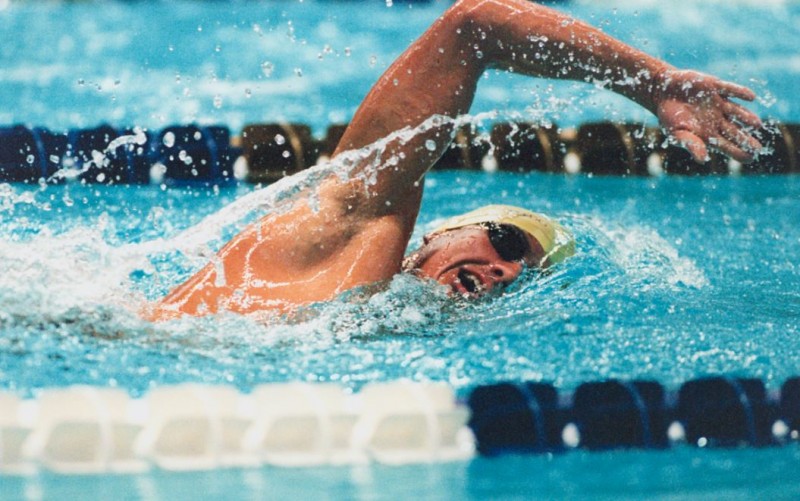
Swimming is one of the most ancient and revered forms of physical activity. From its humble origins as a survival skill to its transformation into a highly competitive sport, swimming has evolved significantly over the centuries. Today, it is not only an essential life skill but also a thrilling Olympic event, showcasing the extraordinary capabilities of athletes from around the globe. In this article, we will explore the different swimming strokes, namely freestyle, backstroke, breaststroke, and butterfly, and delve into the remarkable Olympic records achieved by exceptional swimmers.
Freestyle Swimming:
Freestyle, also known as front crawl, is the fastest and most popular swimming stroke used in both competitive events and recreational swimming. Swimmers perform it on their stomachs, propelling themselves forward using alternating arm strokes and flutter kicks. The stroke's efficiency and the swimmer's endurance play a crucial role in achieving record-breaking times.
Throughout Olympic history, we have witnessed legendary swimmers who have dominated the freestyle events, setting remarkable records. Notable names like Michael Phelps, Ian Thorpe, and Katie Ledecky have become synonymous with excellence in freestyle swimming, holding multiple Olympic and world records.
Backstroke Swimming:
In backstroke swimming, swimmers lie on their backs and move through the water using a combination of arm strokes and upward kicks. It requires impeccable timing and body control, as swimmers cannot see where they are going during the race.
The Olympic records in backstroke events have been continuously challenged and improved by exceptional athletes like Aaron Peirsol and Missy Franklin, leaving an indelible mark in the annals of swimming history.
Breaststroke Swimming:
Breaststroke is known for its distinct arm and leg movements, where swimmers push their arms forward simultaneously while executing a whip-like kick. It demands precision and strength in equal measure, as any disqualification-worthy infractions could cost a swimmer their victory.
In the Olympic realm, breaststroke events have witnessed legendary athletes like Kosuke Kitajima and Lilly King, who have demonstrated exceptional skill and technique, etching their names in the record books.
Butterfly Swimming:
The butterfly stroke is renowned for its challenging and visually stunning technique. Swimmers execute a simultaneous arm movement above the water while performing an undulating dolphin kick. This stroke demands immense strength and coordination, making it one of the most demanding styles in swimming.
Throughout Olympic history, swimmers like Michael Phelps and Sarah Sjöström have showcased their butterfly prowess, breaking records and leaving a lasting impact on the sport.
A Comparative Analysis of Strokes:
Each swimming stroke has its unique set of advantages and challenges. Freestyle offers speed and efficiency, while backstroke provides a sense of direction and gracefulness. Breaststroke tests a swimmer's technique and control, while butterfly demands raw power and endurance.
Swimmers often specialize in one stroke, focusing their training and fine-tuning their techniques to achieve greatness. The choice of stroke can significantly impact an individual swimmer's performance and overall career.
The Impact of Technology:
In recent years, swimming has witnessed advancements in technology that have influenced the sport's landscape significantly. Cutting-edge swimwear, such as high-tech swimsuits, has raised questions about fair competition and led to rule changes to preserve the integrity of the sport.
With technological innovations, swimmers have achieved extraordinary feats, sparking debates about the true source of their success and whether records achieved with the aid of technology hold the same weight.
The Future of Swimming:
As swimming continues to evolve, we can anticipate potential rule changes and innovations that might further redefine the sport. From advancements in training techniques to potential changes in stroke rules, the future of swimming remains open to exciting possibilities.
In conclusion, swimming stands as a testament to human endurance, skill, and determination. The different strokes, each with its own grace and challenges, have given rise to exceptional athletes and awe-inspiring Olympic records. As technology continues to influence the sport, it is essential to preserve the core values that make swimming a captivating and honorable endeavor.
Denny Hamlin to get Second Win after the Crash with Larson at Pocono raceway
Max Verstappen to get on Seventh Position at the Hungarian GP
Empowering the Next Generation: The Influence of Women Athletes